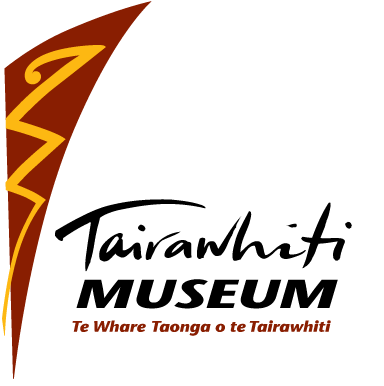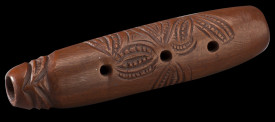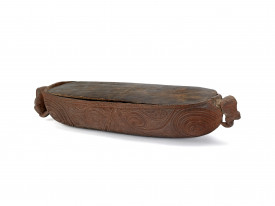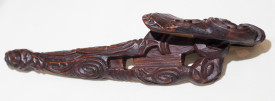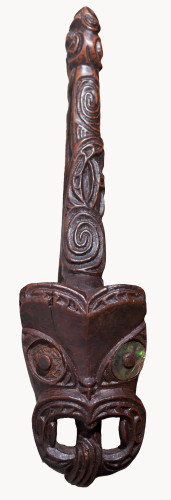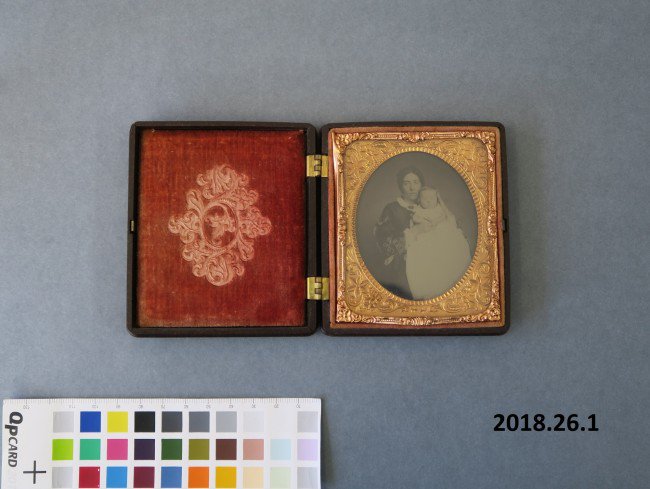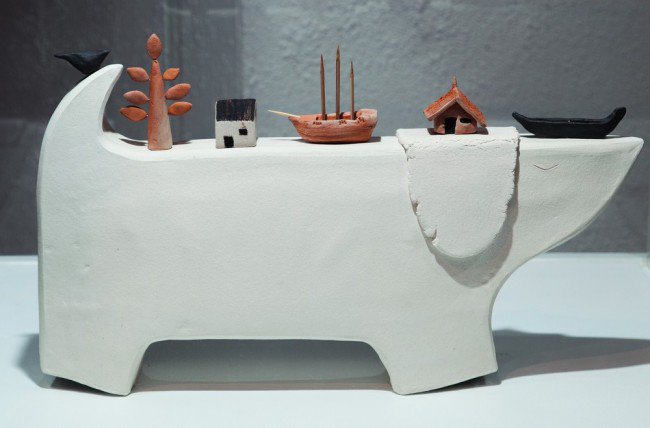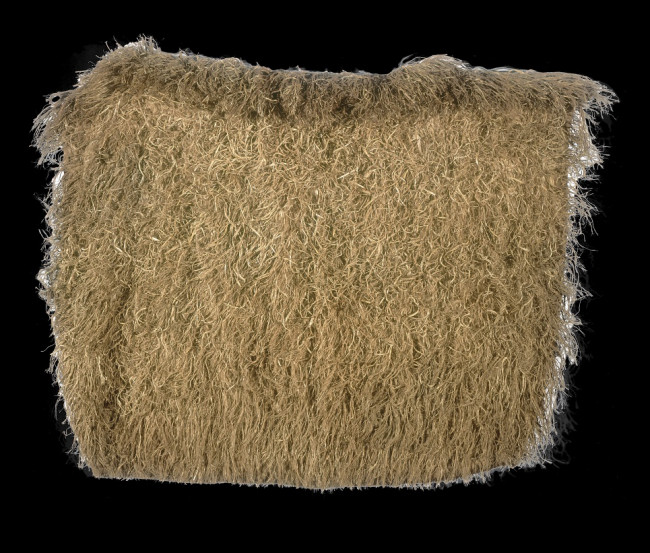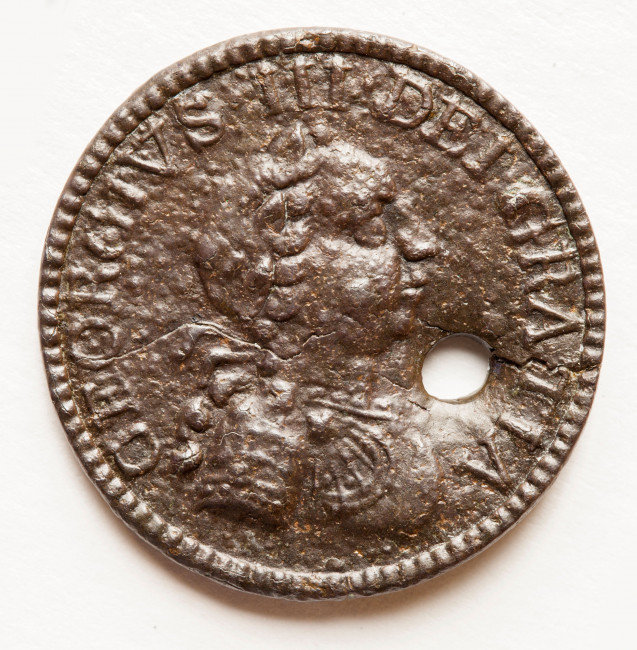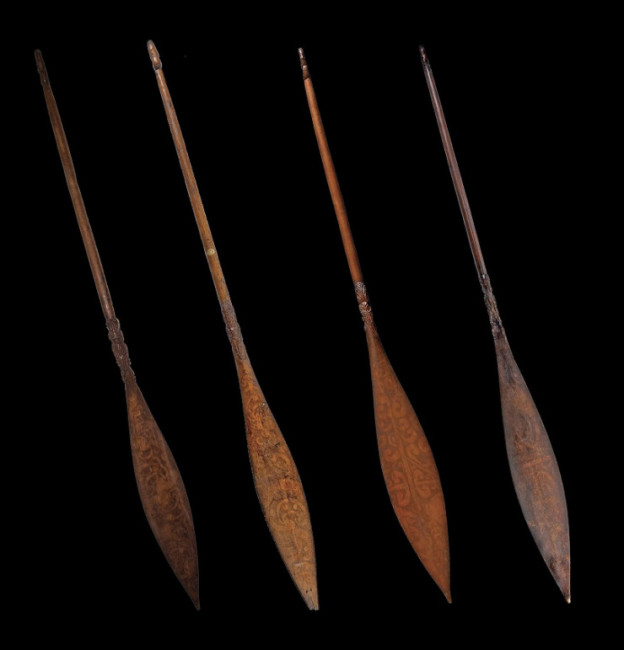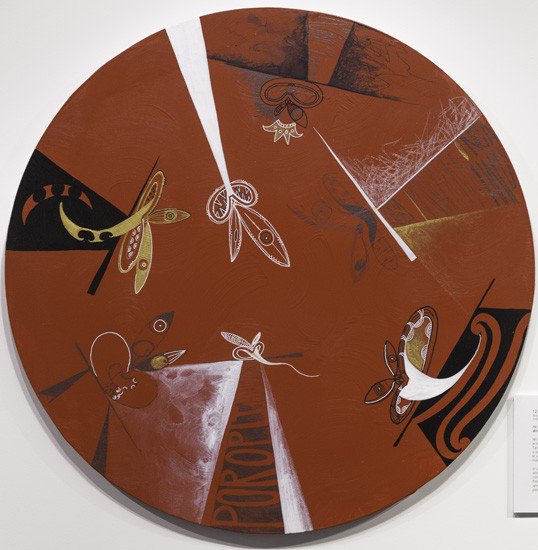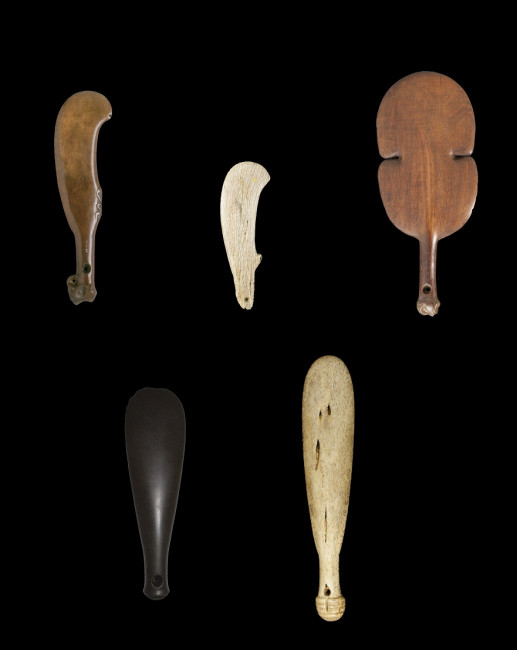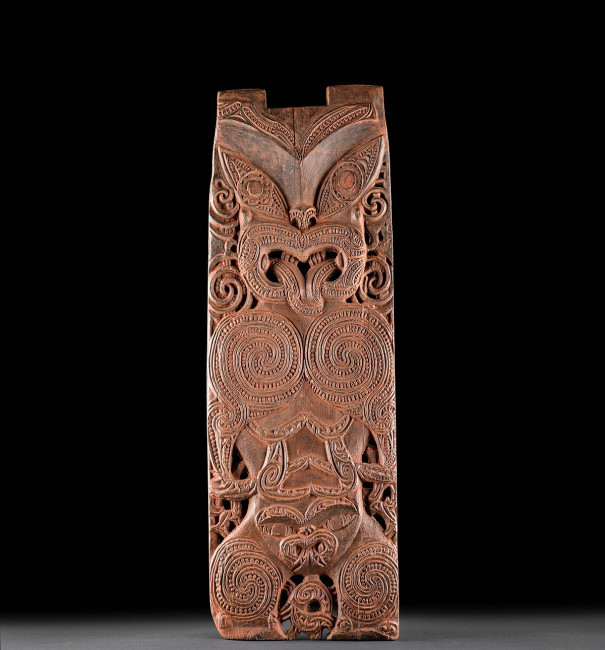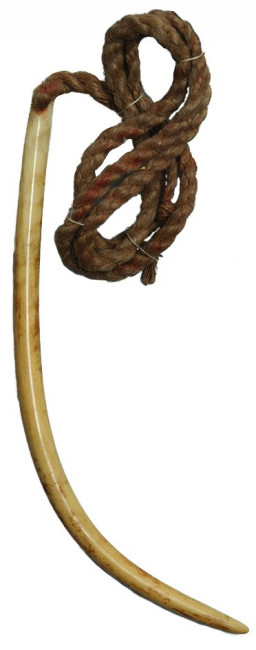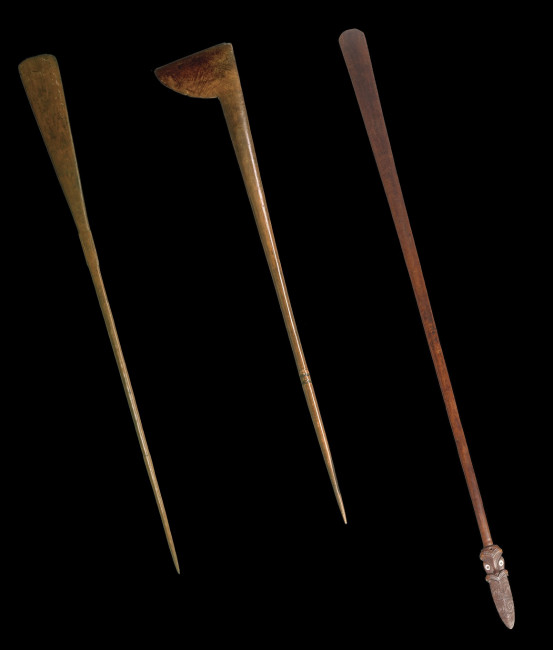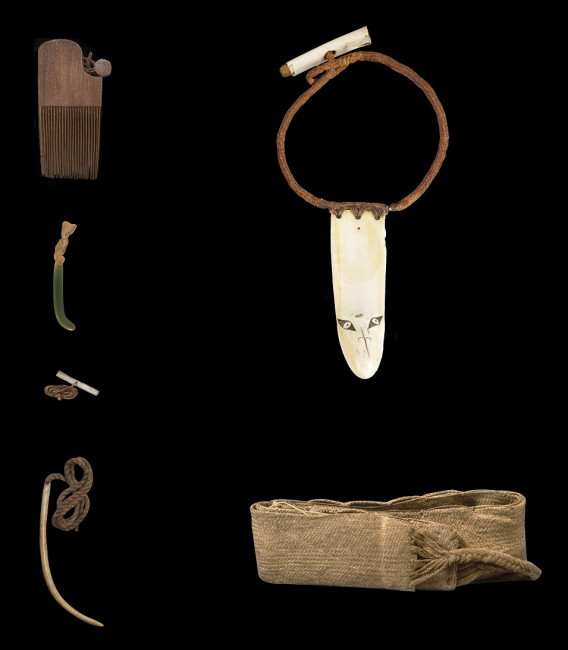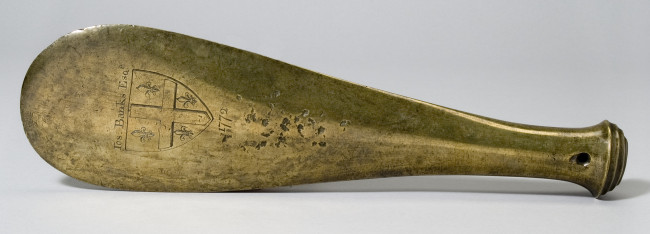Whai ā-matawā nei, tīmata i runga i te taha mauī
Kōauau flute
Rākau Wood
Koia nei te taonga pūoro e horapa ana te rongo. Ko te nuinga he mea hanga ki te rākau, he maire, he mataī, he tōtara me ngā mahinga whakairo kei runga. Pērā i ngā kōauau katoa, e toru ōna wenewene, tūrourouhia e ngā matimati me te hau pārore, hei whakakōrero i tōna rerehua. Me te aha, he hoa haere mā te kai-whakatangi, hei tāhei.
Kōauau are among the more common taonga pūoro (musical instruments). They were customarily carved from maire, mataī, or tōtara wood, with patterns and symbols varying from tribe to tribe. The kōauau has three wenewene (finger-holes) and is played by lifting the instrument to one side and placing the lip on the edge of the blowing hole at one end, then blowing softly over the opposite inside edge. These taonga were also worn around the neck.
On loan from Cambridge Museum of Archaeology and Anthropology,D1914.55
Waka huia treasure box
Rākau, kano māori Wood, natural pigment
Ko te tikanga ake o tēnei mea te waka-huia, he waka mā te humaeko o te huia me ngā taonga whakarākei e rite ana te tapu. He pērā rawa te whakairohia onā, ā, i ngā rā ō mua he mea whata ki ngā tāheke o roto i te whare rangatira. He motuhake ake tēnei waka-huia i tana taupoki, ahakoa e taututetutetia ana mēna rā koia nei te taupoki tūturu. He kōwhaiwhai kei te runga i te taupoki nei, he mea tā ki ngā kano māori.
The name waka-huia indicates that this finely ornamented wooden storage box was used to contain huia feathers or similarly treasured personal adornments. They were usually elaborately carved and traditionally were designed to be suspended from the rafters of prominent whare (houses). This particular waka-huia is unique because it has a painted taupoki (lid). The distinctive kōwhaiwhai design is painted with natural pigments. However, it is questionable if this taupoki is the original.
On loan from British Museum,Oc,NZ.113.a
Paepae hamuti latrine
Rākau, anga pāua Wood, pāua shell
E wānangatia tonutia ana te tikanga ake me te whakamahinga o tēnei momo taonga te paepae hamuti. E mea ana he kakau, heoi anō kāore tonu i toka ngā whakaaro, tērā pea he wahanga nō runga i te waka, he wahanga rānei nō te hanganga o te whare. Heoi anō, he kōkuhunga tapawhāroa kei ngā taha e rua, ā, he pūare tapawhāroa e rua kei roto, māna, he wahanga anō hei tāpaetanga e oti ai te hanga o tēnei taonga.
The original function of this rare type of taonga remains unclear. It is often stated that they are the ends of latrine bars, but firm evidence for this is lacking and they could be parts of canoes or houses. A rectangular recess on both sides of the shaft is pierced with two rectangular holes which indicates that additional wooden attachments are required to complete the structure and function of this mysterious artefact.
On loan from Cambridge Museum of Archaeology and Anthropology, D1914.65
Turuturu weaving peg
Rākau Wood
Whakamahia ai te turuturu hei whata i te pūeru, kia whakawhena, kia tōtika, ā, e rere pai ai ngā mahi a te kaiwhatu pūeru. E rua ngā turuturu hei whakawhata i te pūeru, he mea titi ki te whenua. Pēnei ake, he mea whakarākei hoki ēnei tū taonga ki ngā tohu whakairo.
Turuturu (weaving pegs) are fixed securely in the ground with the cloak that is being worked on suspended between them. In this way the cloak is kept taut, upright and at the right height for the weaver who sits in front of it. Turuturu like this one are not only functional but also finely carved taonga.
On loan from Pitt Rivers Museum,1887.1.715
Ambrotype, possibly of Lucy and her daughter Ida Tiffen
The museum is offered many interesting items for the collection over the course of the year. Often they are seemingly ordinary, everyday objects, but what makes each of them special and worthy of collecting is the wonderful stories they can tell us about our region’s history. This wicker basket is certainly one such object. This basket was used by William Hamilton (known as Ham) Hannah (b. 1920, d.1967) to deliver bread for Walter Findlay’s Bakery in the 1930s. Ham would have delivered bread around Gisborne by horse and cart. A few people out there may remember having bread delivered by him, perhaps using this basket! Ham served as a Driver in the Army Service Corps in the Second World War and continued to work as a driver when he returned to Gisborne after the war. In the 1960s, he was the Custodian at Churchill Park. He was married to Sarah (Sadie) and they had four children. We would like to thank Julie Hannah for gifting her father-in-law’s breadbasket to the museum.
Ham and two of his four children, Kevin (left) and Gareth (right), posing in the basket in the garden of the family’s home.
Walter Findlay’s advert, The Gisborne Herald, 20 October 1941
Weight on the back of Te Kuri a Paoa by Peggy Ericson
The museum is offered many interesting items for the collection over the course of the year. Often they are seemingly ordinary, everyday objects, but what makes each of them special and worthy of collecting is the wonderful stories they can tell us about our region’s history. This wicker basket is certainly one such object. This basket was used by William Hamilton (known as Ham) Hannah (b. 1920, d.1967) to deliver bread for Walter Findlay’s Bakery in the 1930s. Ham would have delivered bread around Gisborne by horse and cart. A few people out there may remember having bread delivered by him, perhaps using this basket! Ham served as a Driver in the Army Service Corps in the Second World War and continued to work as a driver when he returned to Gisborne after the war. In the 1960s, he was the Custodian at Churchill Park. He was married to Sarah (Sadie) and they had four children. We would like to thank Julie Hannah for gifting her father-in-law’s breadbasket to the museum.
Ham and two of his four children, Kevin (left) and Gareth (right), posing in the basket in the garden of the family’s home.
Walter Findlay’s advert, The Gisborne Herald, 20 October 1941
Tū te Whaihanga Showcase 4
Pākē rain cape
Tū te Whaihanga Showcase 8
Mētara Koroneihana a Hōri III George III Coronation medalet
Tū te Whaihanga Showcase 5 and 7
Hoe paddles
Hamuera by Erena Koopu
Hamuera by Erena Koopu, 2018 Acrylic and graphite on canvas, 710mm diameter This work by Erena Koopu was part of the exhibition Hei ō Mō Apanui | Iwi Sustenance held at Tairāwhiti Museum in 2018 and purchased by the Friends of Tairāwhiti Museum for the collection. He waiata a ringa (an action song) Performed by Te Kapa Haka o Te Whānau a Apanui at Te Matatini in the year 2005 in Palmerston North. Nō te tau 2004 ka whakaturehia e te kāwanatanga te pire takutai moana, e riro ai te taitara o te papa moana, tōna ritenga, he muru whenua. I taua tau rā, ko Tāriana Tūria te wahine toa o Reipa kāore i tautokona taua pire, ā, ko ētahi atu o ana hoa mema Māori, i tautoko tonu. He waiata-ā-ringa tēnei e kōrero ana ki aua mema rā, kia aro ki ngā tohutohu a ngā poropiti Māori, kei reira te māramatanga e noho ana. In 2004 the Government passed the controversial Foreshore and Seabed Bill, which transferred title to the crown, and in itself is a form of modern day confiscation. In that same year, Tāriana Tūria, Māori MP of Labour crossed the floor, while the rest of her Māori colleagues remained seated. This action song speaks to those seated members, and urges them to remember the lessons of past Māori prophets, as clarity must resides in their messages.
Tū te Whaihanga Showcase 2
Patu ōnewa weapon Wahaika weapon Patu Parāoa weapon Kotiate weapon
Tū te Whaihanga Showcase 12
Te Pou o Hinematioro
Aurei
Aurei cloak pin Rei-puta, muka harakeke Whalebone-tooth, flax fibre
Tū te Whaihanga Showcase 1
Pouwhenua weapon Tewhatewha weapon Taiaha weapon
Tū te Whaihanga Showcase 10
Tātua belt Heru Comb Rei-puta whale-tooth necklace Aurei cloak pin Poro-toroa Albatross toggle Kapeu ear pendant
Tū te Whaihanga Showcase 13
Patu Parāhe Brass patu
The museum’s collections are always growing and on this page we share some of the highlights. Our thanks to the donors for their support.
Donating to the collection
Visit our Donations page for more information.
Research and access
Researchers can view collections that are not on display by making an appointment with the Museum Collection Manager. Staff can also take small group tours through the collection storage facilities by appointment. Please note that staff are not always available immediately and it is advisable to make arrangements as far in advance as possible, particularly if you are only visiting Gisborne for a short period.
Researchers who are unable to visit in person can make their enquiry by email, letter or telephone
